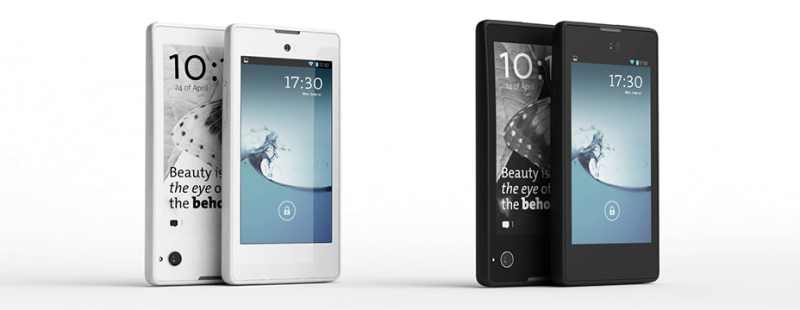
 On December 4, 2013, Yota Devices officially launched the flagship Android YotaPhone in Russia, Austria, France, Spain and Germany, with a price tag of 499 Euros. The YotaPhone is one of the more interesting concepts to come along in some time. The device has two displays, one on each side of the phone. The front, main display is a standard 720×1280 LCD screen, while the back display is the e-ink electronic paper display. Thee e-ink screen is where the YotaPhone begins to gets interesting.
On December 4, 2013, Yota Devices officially launched the flagship Android YotaPhone in Russia, Austria, France, Spain and Germany, with a price tag of 499 Euros. The YotaPhone is one of the more interesting concepts to come along in some time. The device has two displays, one on each side of the phone. The front, main display is a standard 720×1280 LCD screen, while the back display is the e-ink electronic paper display. Thee e-ink screen is where the YotaPhone begins to gets interesting.
One of the problems that YotaPhone takes on is that of missed notifications. To fight this, the e-ink screen is always on. Yota Devices CEO Vlad Martynov outlined the phone via their press release:
YotaPhone combines a smartphone and e-reader into one device for those who enjoy reading on-the-go. You can save images and information on the second screen, and it stays there, even if you lose battery power. You can save anything on the always-on display from a map to a boarding pass. Information, like a missed call or meeting reminder, stays on the always-on screen until it is no longer needed.1
Another interesting feature is the absence of any of the traditional Android navigation buttons. The button commands are initiated by a series of swipe-like gestures; left-to-right, right-to-left, up-down, and long-presses.
This is an incredibly unique Android device, but with no immediate plans to bring the YotaPhone to the United States, we may be waiting a while to get our hands on one. Check out the YotaPhone promo video below:

